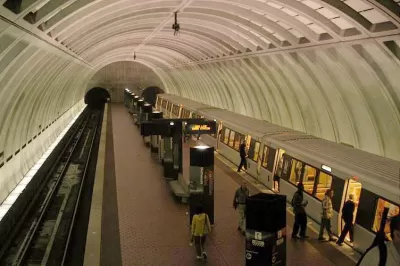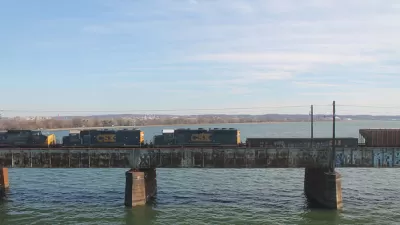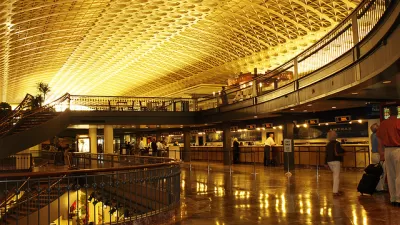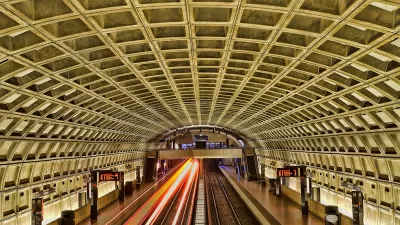D.C.'s ridership is down even as density around stations is up. More residents are choosing to drive or bike.

D.C. Metro ridership is falling at a concerning rate, even as more people move to the areas with good transit access. "According to census data provided to Express by the city’s planning office, about 200,000 households were living within a half-mile of a Metro station in the period between 2012 and 2016, about 15,000 more than in the previous five-year period," Kery Murakami writes for the Washington Post. Density is a key factor in how well transit can work. But in D.C. many riders are switching to driving.
At the same time active modes have been growing as well. "The number of those walking or commuting by another means — like biking, scootering or taking a ride-share service — grew by a third," Murakami reports. There have been a few bright spots, "Ridership did grow at seven of D.C.’s 40 Metro stations, as the neighborhoods around them grew," Murakami writes. But on balance the system has had trouble keeping up with the competition.
FULL STORY: More people are living near Metro stations. But fewer are actually riding the trains

Planetizen Federal Action Tracker
A weekly monitor of how Trump’s orders and actions are impacting planners and planning in America.

Maui's Vacation Rental Debate Turns Ugly
Verbal attacks, misinformation campaigns and fistfights plague a high-stakes debate to convert thousands of vacation rentals into long-term housing.

Restaurant Patios Were a Pandemic Win — Why Were They so Hard to Keep?
Social distancing requirements and changes in travel patterns prompted cities to pilot new uses for street and sidewalk space. Then it got complicated.

Charlottesville Temporarily Has No Zoning Code
A judge ordered the Virginia city to throw out its newly revised zoning code, leaving permitting for new development in legal limbo.

In California Battle of Housing vs. Environment, Housing Just Won
A new state law significantly limits the power of CEQA, an environmental review law that served as a powerful tool for blocking new development.

Boulder Eliminates Parking Minimums Citywide
Officials estimate the cost of building a single underground parking space at up to $100,000.
Urban Design for Planners 1: Software Tools
This six-course series explores essential urban design concepts using open source software and equips planners with the tools they need to participate fully in the urban design process.
Planning for Universal Design
Learn the tools for implementing Universal Design in planning regulations.
Heyer Gruel & Associates PA
JM Goldson LLC
Custer County Colorado
City of Camden Redevelopment Agency
City of Astoria
Transportation Research & Education Center (TREC) at Portland State University
Jefferson Parish Government
Camden Redevelopment Agency
City of Claremont





























